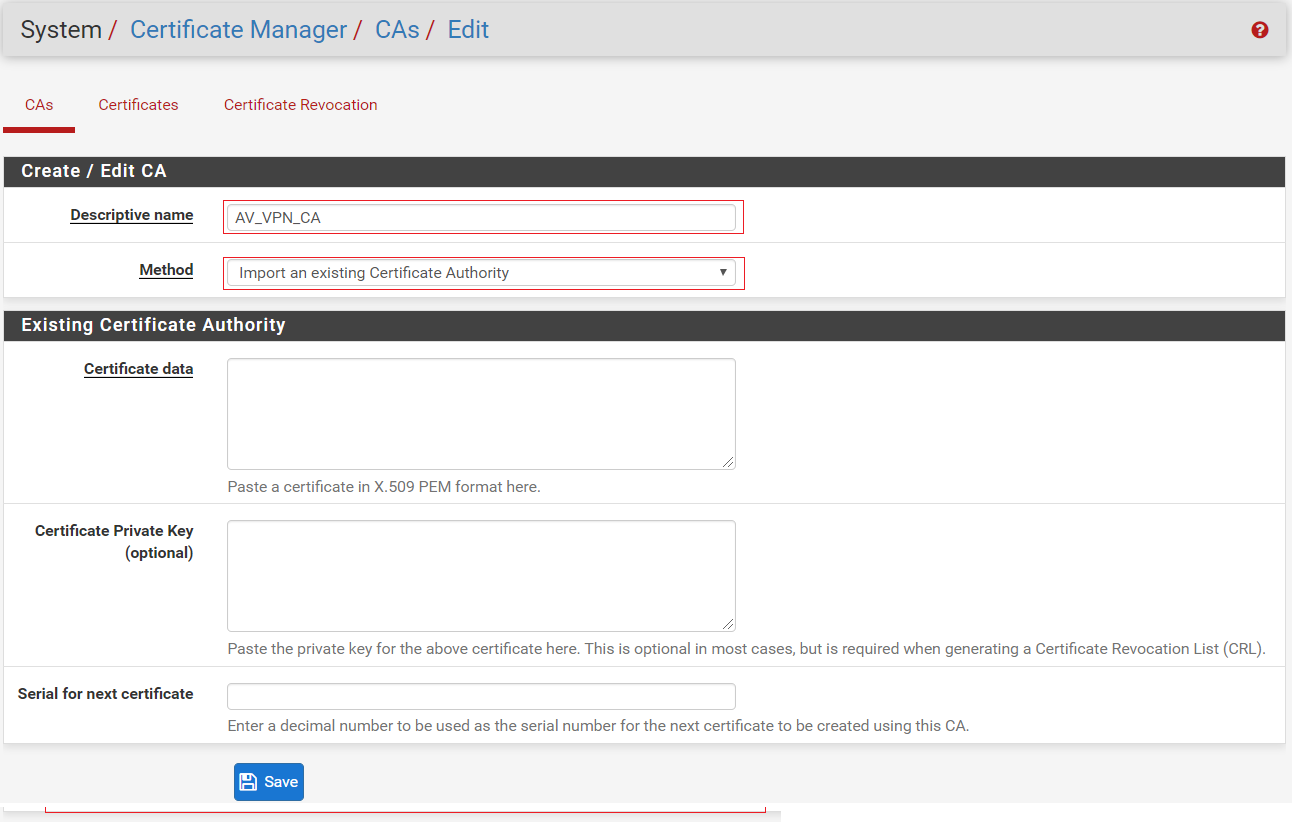
The last entry in the log (bad source address from client) does not look good.I remain unable to access client side local IPs from the server side with this configuration. I tried adding a IPV4 Tunnel Network setting of 10.55.201.2/24 to the CSO. The log should show if the CSO is properly applied and if the server adds the correct route to the clients network. If still no joy, enable logging in the vpn server settings, connect and post the log. The server is set to a subnet topology for the tunnel, and tunnel network setting 10.55.201.0/24. I think I understand your point, but I am currently testing with only a single client connected.Īccordingly to the server topology either state a /30 tunnel mask in the CSO if the server uses net30 or a single IP with equal mask as in server settings if the server uses sebnet. In the CSO you should specify a very high IP from the tunnel pool to have it unique, cause since there are multiple clients connecting, the server begins the IP assignment from the lowest upwards. I do have the server setting configured to match on username, and I do see that the user is authenticated in the openvpn log. In the OpenVPN server advanced settings you can specify if the CSOs should match to the certificates common names or the user names. I'm assuming you mean to specify it in the CSO Tunnel Settings / Tunnel network field? If so, I had left that field blank originally, but I did subsequently try filling it in as described further below.Īlso possibly that the CSO isn't applied due to not >matching common name. When you want to use the access server for a site-to-site connection as well, you want to set up a " Multi-Purpose OpenVPN server" and add a CSO for the client(s) you want to reach the network said in pfSense OpenVPN client/server (site to virtual IP seems very common. When you set up a site-to-site server, you choose a /30 tunnel subnet and enter the networks behind client into the "Remote Networks" field to let the server know the proper route. However, I like more to separate access servers from site-to-site connection and set up multiple servers for this purpose. He connects to the server, gets the server IP pushed for the gateway and the networks which he should route to the server.īut since multiple clients connect to the single server, you have to tell the server behind which specific clients IP he can reach a specific network.
#PFSENSE OPENVPN HOW TO#
But if you need to access a network behind the client you have to tell the server how to reach this network.įrom the point of a client all is clear.
#PFSENSE OPENVPN WINDOWS#
Here are all the rules for the pFsense server:įinally, here is a picture and routing tables for the same server connected with a windows OpenVPN you have set up an access server allowing multiple clients to connect. Here are all the rules for the pfSense client:

I don't see any deny rules causing problems with the server-side local IPs in the pfSense client firewall logs.Īttached is a picture and routing tables for the setup that is failing:

On the client side, if I use a windows OpenVPN client instead of the pfSense OpenVPN client, everything works fine. I created the OpenVPN client using an import of the OpenVPN configuration exported from the pfSense OpenVPN server.

The pfSense client is connecting, and on the client side I can ping server-side local IPs, but I am otherwise unable to access the server-side local IPs, for example I can not connect to the pfSense server-side GUI. I have created a pfSense OpenVPN client at one site, which is connecting to a pfSense OpenVPN server at another site. Hello pfSense folks, I have spent a lot of time trying to debug a OpenVPN issue, I think I have a good summary of the issue, and good pictures and screenshots below.


 0 kommentar(er)
0 kommentar(er)
